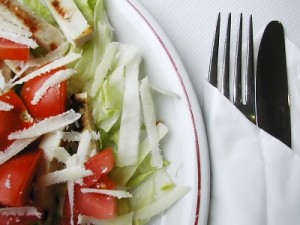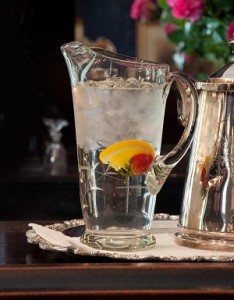Employees with busy schedules usually order foods that take less time to prepare. Quick service restaurants and fast food chains are two options, but many restaurants also offer meals that take under 15 minutes to prepare.
Quick Fix Meals
There are plenty of quick fix meals to order at a restaurant. You can have steak with broccoli and onion, beef and mushroom stir fry, broccoli and beef stir fry, and more. Omelets also take less time to prepare and fit into your diet. If you are short of time, a buffet or salad bar is your best bet. There is plenty of choice, from hot and cold salad selections to appetizers and desserts. Some restaurants also have a seafood counter and offer gourmet cheese and meat selections and seasonal fruits. Other restaurants feature themed sections such as Mediterranean, Mexican, salad, Asian, fish market, and others. You can choose from a selection of main dishes, including turkey breast,  slow roasted beef, smoked and grilled meats, and a lot more. There is a selection of vegetables and other products to build your own salad, including red onion, pickled vegetables, shredded carrot, tomatoes, mixed salad greens, etc. Many buffet restaurants also offer low carb-friendly salads such as green bean salad with olive oil, Greek salad, feta, pecan, and apple salad, and many others. You can choose from a selection of hot meals such as veal and beef meatballs, baked chicken, baked fish, and other options. Salad bars offer healthy and diet-friendly options to busy customers. There is a selection of healthy options such as shiitake mushrooms, jumbo asparagus, smoked salmon, and fresh mozzarella. Salad bars offer diet-friendly items such as sun-dried tomatoes, artichoke, prosciutto, and manchego cheese and parmesan. Some restaurants also offer customized salads and wraps and a variety of fresh toppings.
slow roasted beef, smoked and grilled meats, and a lot more. There is a selection of vegetables and other products to build your own salad, including red onion, pickled vegetables, shredded carrot, tomatoes, mixed salad greens, etc. Many buffet restaurants also offer low carb-friendly salads such as green bean salad with olive oil, Greek salad, feta, pecan, and apple salad, and many others. You can choose from a selection of hot meals such as veal and beef meatballs, baked chicken, baked fish, and other options. Salad bars offer healthy and diet-friendly options to busy customers. There is a selection of healthy options such as shiitake mushrooms, jumbo asparagus, smoked salmon, and fresh mozzarella. Salad bars offer diet-friendly items such as sun-dried tomatoes, artichoke, prosciutto, and manchego cheese and parmesan. Some restaurants also offer customized salads and wraps and a variety of fresh toppings.
Many buffet and salad bars offer dinner, breakfast, and lunch menus. They also feature a selection of signature dishes such as pork carnitas, BBQ ribs, and steaks with onion and wild mushrooms.
Mobile Apps and Ordering
Some restaurants are about to offer mobile apps that allow customers to pre-order their meal. This saves a lot of time and waiting in line. Customers pre-order through their mobile phone and pay through a place and pay system. Online ordering is another option for employees with busy schedules. And if don’t have the time to eat out, you can use a catering service. Many restaurants offer a catering menu with snacks, salads, and meals. Some salad bars also offer catering services and customers are free to create their own salad. They offer a selection of cheeses, including Swiss, cheddar, pepper jack, goat cheese, crumbled blue, and others. Diet-friendly salad bars offer a selection of protein sources such as shrimp, tuna, steak, smoked bacon, tofu, and others. Some restaurants even offer protein bars and shakes. You can order an assorted fruit platter as well, depending on your diet. There are many payment options, including Discover, MasterCard, Visa, and pay on delivery. There are catering services that accept large, medium, and small orders.
Fast Food Joints and Diet-friendly Food
Fast food restaurants also offer diet-friendly items to busy customers. There are low carb options (see: lowcarbfoods.org) such as wings, ranch chicken salad, grilled chicken strips, lettuce wrapped burgers, and salads. Other fast food items to order include skinless chicken, grilled chicken wrap, grilled salmon, and more. Some restaurants even offer low carb burgers. The calorie count ranges from 140 to 570, depending on the menu of choice.



